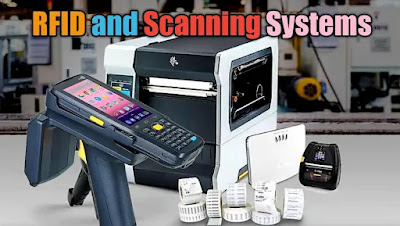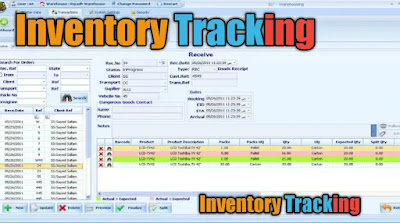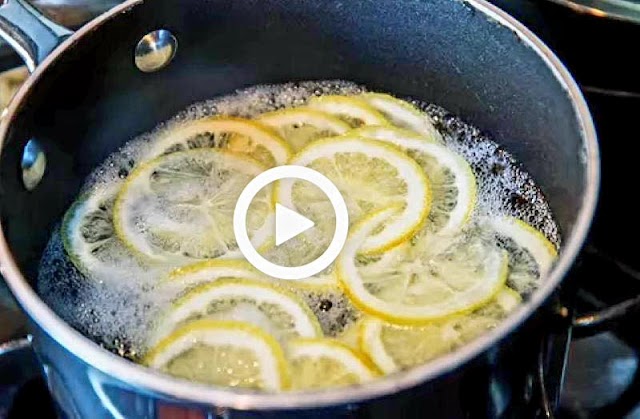 |
5 Warehouse Automation Technologies: How to Save Money with Machines and Software
There are many warehouse automation technologies that promise to save your business money, and relieve the strain on your staff. But how do you know which one is right for you? This article will discuss five of the most popular warehouse automation technologies available, and how they can benefit your business.
1. 5 Warehouse Automation Technologies for your business
Warehouse automation is a hot topic, and there’s a good chance your business will be using it in the near future. The technology helps businesses to cut costs, increase efficiency, and improve customer satisfaction. If you’re wondering which warehouse automation technologies are right for your business, keep reading to learn more.
1. Unlike traditional warehouse jobs, there are no building trades needed to hire a warehouse tech. There are only basic roles like inventory management. Companies like Amazon have revolutionized shipping by not only automating the sales process, but also allowing shelving and distribution automation. After using Amazon’s services, 98% of shoppers say they would not shop there again.
2. So, what are the warehouse tech’s job duties? Positions include the following:
Shelving and shelving
Stock management
Packing
Hoarding and unpacking
Quality control tests
Warehouse salaries are usually higher than standard job positions. Warehouse techs are able to grow their skill set quickly and make more than the standard salary, which is why these positions are so attractive.
3. Keep in mind the supply and demand for warehouse tech varies. There are many warehouse jobs in the United States, but the demand for warehouse tech is lower compared with the supply. Amazon has over 20,000 warehouses around the world, but only a few hundred jobs are available. There are more warehouse jobs in the United States than in any other country. This number will increase in the future as population continues to increase. Inventory is important to businesses, but it can wait until after the visitors come to pick it up.
As it’s described below, warehouse automation focuses on cutting costs associated with holding inventory. There are several Benefits of utilizing warehouse automation that can be a significant benefit to your business, which is why technology is beneficial for many businesses.
2. Warehouse Automation Technology #1: RFID and Scanning Systems
The U.S. retail industry is one of the biggest industries in the world, so it’s no surprise that the U.S. retail industry is one of the biggest contributors to the use of warehouse automation technology. The U.S. retail industry accounts for 30 percent of the total warehouse automation market in the world. So using warehouse automation to support your business seems like a great option if you're a retailer. 2. 10 Ways to Use Logistic Processes With the growth of e-commerce, the use of logistic processes has also grown. To benefit from this growth, it’s important that you incorporate logistic processes into your e-commerce strategy, increasing your visibility, improving your customer service, and making your business appear more professional and trustworthy. 3. How to Buy a House as an REO Without Being a Real Estate Investor If buying a property as an REO (real estate owned) is scary, buying a house as an investment is a lot scarier. If you’re a real estate investor, you have about as much to lose with a house as a typical retail cash buyer has with an entire enterprise. While some people might put an unrealistic amount of faith in the stock market and the economy, there’s no doubt that the real estate market is much more stable than something as volatile as the stock market. And if the world plunges a third into economic ruin in a few short years, it will take major companies quite some time to recover. So before you gut multiple properties and run for the hills as a general rule of thumb, check out how you can buy houses as an REO without needing outside investment. 4. How to Pitch SEO Services to Foreign Companies While you may be wondering how you can get a job offer to work for an SEO company in Russia (for example) without being able to speak Russian to the interviewer, it’s possible. There are companies all over the world that want to work with companies who are in high demand and have a good grasp on SEO.
3. Warehouse Automation Technology #2: Kiva Robots
In 2004, Amazon spent $600 million on robots to automate the picking and packing process. Kiva Systems built robots that could navigate around a warehouse and bring shelves of products to workers, who then put the products in boxes to be shipped out. These robots improved efficiency in Amazon’s fulfillment centers and cut down the amount of time it took to fulfill customer orders.Even once the initial load of products had been loaded onto the trucks, then workers could work on maintaining order in order to keep prices competitive. Sounds pretty techy, right? Well these technologies don’t just benefit Amazon, they’re available for you to use. Here are the biggest that your business might reap from.
Amazon-owned Kiva robots large and small have gone through a tremendous technological evolution over the past few years. The biggest difference? It uses artificial intelligence to dynamically scan products so that they can be automatically sorted. The Kiva Robots combine specialized grippers around a circular arm with sticky tape pockets on each gripper. This allows the robots to achieve the same level of accuracy they achieved by hand.
The next step in automation is the surge of intelligent platforms that are becoming available to warehouse and shipping companies. Smart Machines from Sunrun, Reach International, and eRobot are able to understand human language and provide workers with instructions and basic tasks. Basically, they can drive around and assist in the day-to-day operations of your business. Sunrun even has a Virtual Assistant to look after your inventory so that it can be taken out and distributed to a storage facility faster. All of these technologies allow you to automate the day-to-day operations of your business with a minimum of fuss.
Backed by a strong foundation of technology, robots and intelligent platforms, your business can avoid many of the delays that can occur during shipment.
2. How to implement warehouse automation for your business Review times are getting longer so any task that takes longer than one second is going to be slow to carry out.
4. Warehouse Automation Technology #3: Voice Entry Systems
Voice entry systems are a great way to create a more efficient warehouse and to provide your employees with a safer work environment. Voice entry systems can be used to automate the collecting of data, to create a more efficient receiving process, and to eliminate the need for paper-based processes.
Indeed, one of the most common applications for voice entry is in warehousing systems. Using these systems, employees can extract information from a warehouse using a simple voice command. Voice entry systems have eliminated the need for multiple people to collect and input data frequently, thus boosting productivity and reducing costs.
As a company, you can benefit from an integrated solution that captures data from various sources and provides a feature-by-feature solution. We have covered several features specific to these systems including:
2. AR/VR for Design and Visualization of Logistics and Distribution Systems Much of the time, visual design is the bottleneck in a distribution center. Logistics Logistics technology can help streamline data entryso that it no longer adds to bottlenecks and errors in the system.
Visualization of warehouses using AR (augmented reality), VR (virtual reality), and Machine Learning helpsannotate and improve the process. Using these technologies, manufacturers are provided with tools that enable a company to maximize their efficiency by optimizing operations, enhancing processes, and decreasing costs.
3. Data Management With Smart Data Flow Control With an integrated solution, you can maintain an effective data flow between your warehouse workers and data warehouses. This will ensure uninterrupted data and information flow between systems throughout the day.
Using the data flow control technique, you will help minimize bottlenecks in data collection and data input. This helps reduce the overall cost by reducing the need for supervised learning and data augmentation.
4. Real Time Data Flow Control With Artificial Intelligence Using open-source and industry standard HDL software and Anaconda Anaconda distribution of Python, you can know when changes are made to the data warehouse and adjust its data flow accordingly to optimize your warehouse operations.
5. Warehouse Automation Technology #4: Mobile Devices on the Floor
Mobile devices in the warehouse can help provide visibility into the operation, allowing managers to make quick decisions based on real-time data. With mobile devices, workers can instantly report issues or take photos of problems on the floor, and managers can respond accordingly.
2. 5 Apps to Find Sales and Marketers' Schedule and Trends By keeping track of employees’ activities, marketers can identify trends in their marketing and sales processes. Time-based tools like charts, timelines, and activity logging allow managers and analysts to quickly adjust and view insights on a number of different metrics at any point in time. Tasks like figuring out how to best schedule tasks or freelancing can also be more efficiently managed.
3. 5 Platforms to Connect and Manage Your Relationship With Customers, Partners, and Suppliers One of the biggest challenges for warehouse operations is managing relationships with customers, partners, and suppliers. Here are the 9 best technologies to ensure that processes are running smoothly.
4. 5 Trends That Will Shape the Future of Workplace automation By 2027, there will be a 1 in 6 chance of an employee or beneficiary becoming diabetic, a 1 in 5 chance of a worker experiencing an COVID-19 infection, and a 1 in 4 chance of a worker being diagnosed with work-related stress at work. While it’s not uncommon to experience turnover between 25% and 75% at a company in a fast-moving industry, innovative technology can help your business survive and thrive.
5. 5 Ways to Manage Mules, Segments, and Dangerous Goods at B-Shops A good mule service and effective shipment tracking are critical for making sure your items reach the destination safely and on-time. Using big- data technologies, here are more ways to monitor, manage, and control the flow of goods.
6. 5 Best Practices for Attending Tech Conferences Attending conferences activates your brain and boosts your professional network because you gain new skills and broaden your knowledge. Start preparing now because the future relies on it.
6. Warehouse Automation Technology #5: Software to Help You with Inventory and Order Tracking
1. Inventory Tracking
It's important to keep track of your inventory. You should know how much you have, where it is, and how much more you need to order. Your inventory system should be flexible enough to handle any changes to your product, your customers, your suppliers, or your business model.Or, it should allow you to place certain orders that need to be fulfilled immediately. Whatever the purpose, knowing your current situation in this area will be beneficial when researching solutions. As there are hundreds of vendors with different offerings and implementations, we won't discuss them all, but here are a few best practices that can help you. Demand Vector Demand Vector is a software solution that allows you to connect different departments within your company. It helps you monitor their stock levels, order status, and allocate resources accordingly. By using Demand Vector tools you can: It also helps you to track the impact of new promotions and reduced stock levels. It not only helps you optimize your business operations, but it allows you to analyze how to avoid any disruptions. Consider using it to monitor order flow in particular, inventory levels, supplier capabilities, and your different fulfillment centers. It’s also ideal for companies with complex logistics operations. Graylog Logistics Graylog Logistics is a very popular tool that allows you to monitor your loads, shipments, and material movements. It comes with a story element that allows you to proceed from first information requesting to last permanent detail, making your work easier. A powerful dashboard makes it easy to stay on track. It allows you to create and manage your projects in real time. It also has amazing custom dashboards. And of course, libraries behind the scenes, so you don’t have to code. OpsBest is a comprehensive solution for managing inventory, orders, and shipments for your business. It’s a solution like demand vector, but for operations. With a big user base, enterprises can save years of mistakes and improve their operations significantly. They can also save on costs because of fewer material purchases.
2. Order Tracking
There is a high probability that your customer may wish to track the status of their order. You can provide the order number and other details on your website, which will help the customer check the status of their order. The customer can then track their order using the tracking details provided to them. This app allows you to view your order, inventory, and shipment status, together with the tracking details of the order. Previously implemented to help warehouses fulfil their functions: FedEx and UPS, but has since expanded its functionality to include other third parties. Taking into account the particularisation of modern supply chain management, Trackback™ is an ERP solution that enables teams to provide the most valued real-time information to their customers and maintains a holistic view of the customer’s goods. The company was launched in 2006 and is based in Berlin, Germany. As a collaboration software, Trackback offers various solutions such as the Customer Collection Management, Stock Status & pending shipments, and a Historic Data Management system that allows you to store historical data of previous orders. Additionally, Trackback is also integrated with FedEx Freight and other third party logistics services. With these various features backed by sophisticated processing technology, Trackback is ideal for accommodating your customer’s requests for real-time deliveries or tracking inventory and shipments. Outreach is a leading English-language ERP solution. Founded and run by GPT Employment Solutions, who help employers manage their full supply chain, Outreach makes managing supply chains easier for Enterprises as it consolidates, stores and exports data and information with a single vision and approach. Keep your product catalog on your website, including customer quotes and sales information. Measure the sales of existing customers, advance proactive ordering, inventory and shipments, set up customer reminders and much more. Address can be either Sales or Warehouse based with several modules that save you time and money. Insight helps ‘radically simplify’ supply chain operations for both small and mid-sized businesses.
Read More Details: HCL Technologies: The 5 Things You Should Know
Source/Via











0 Comments
If you any doubts, please let me know.